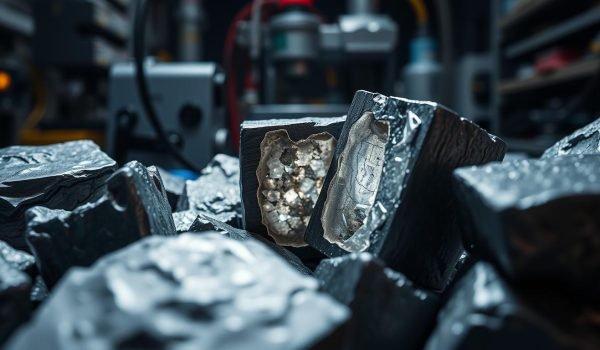You’re probably familiar with the concept of magnetism, but have you ever wondered if certain metals are magnetic? One such metal is tungsten, known for its exceptional strength and high melting point. But the question remains: does it possess magnetic properties?
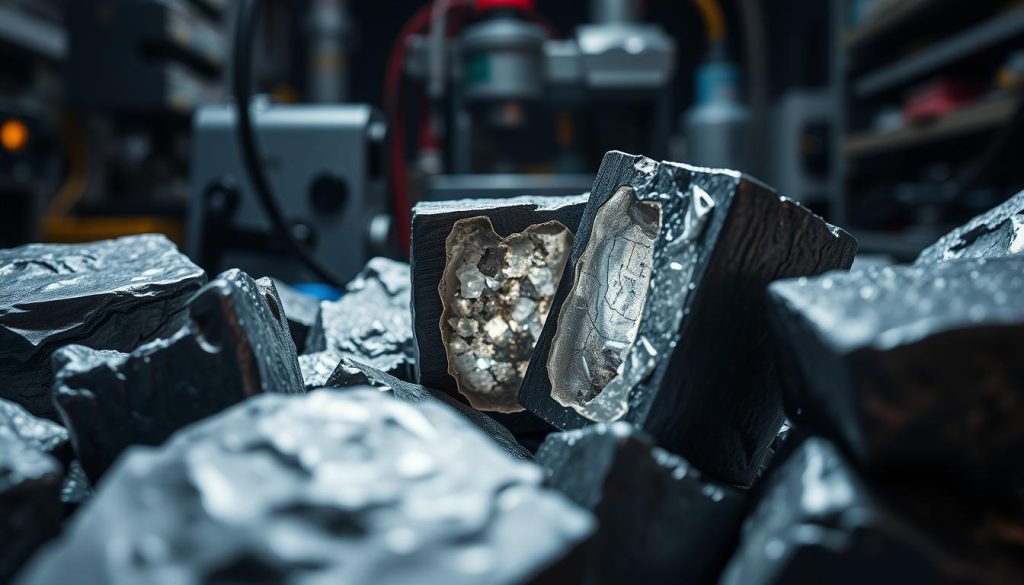
Tungsten, a chemical element with the symbol W, is a robust metal used in various industrial applications. Its unique physical and chemical properties make it an essential material in many fields. As we delve into the world of tungsten, you’ll discover its magnetic behavior and how it compares to other metals.
Understanding Tungsten: The Basics
Tungsten is a fascinating element with a range of properties that make it valuable. To understand its significance, we need to explore its fundamental characteristics.
What is Tungsten?
Tungsten is a transition metal located in Group 6, Period 6 of the periodic table, with an atomic number of 74. As a transition metal, tungsten exhibits a unique set of properties that distinguish it from other elements.
Key Physical Properties of Tungsten
Tungsten is known for its exceptional hardness and high melting point. It has two major crystalline forms: the stable α phase with a body-centered cubic structure and the metastable β phase with an A15 cubic structure. The crystal structure of tungsten significantly contributes to its physical properties, including its hardness, brittleness, and thermal conductivity.
Chemical Composition and Structure
Tungsten’s chemical composition allows it to form various compounds and alloys with distinctive properties, such as tungsten carbide, tungsten disulfide, and tungsten oxides. The chemical structure of tungsten influences its interaction with other elements and its behavior in different environmental conditions. Understanding the composition and structure of tungsten is crucial for appreciating its applications and potential uses.
Is Tungsten Magnetic? The Simple Answer
The question of whether tungsten is magnetic can be answered by examining its magnetic classification. Tungsten is classified as a paramagnetic material, which means it has a weak positive susceptibility to magnetic fields.
Magnetic Classification
Tungsten’s paramagnetic nature indicates that it is weakly attracted to magnetic fields. However, this attraction is minimal, and tungsten does not retain magnetism once the external magnetic field is removed.
Magnetic Susceptibility of Pure Tungsten
At room temperature, tungsten’s magnetic susceptibility (χ) is approximately +6.8 × 10⁻⁶ emu/g, indicating a slight attraction to magnetic fields. To put this value into perspective, ferromagnetic materials like iron have a magnetic susceptibility in the range of 10³ emu/g, which is several orders of magnitude stronger than that of tungsten. This means that while tungsten is technically attracted to magnetic fields, the effect is so weak that it’s generally considered non-magnetic in practical terms.
You should now understand that tungsten’s electron configuration, with its partially filled d-orbital, contributes to its paramagnetic behavior. Additionally, temperature can affect tungsten’s magnetic susceptibility, with higher temperatures typically reducing the already weak paramagnetic effect.
The Atomic Structure Behind Tungsten’s Magnetic Properties
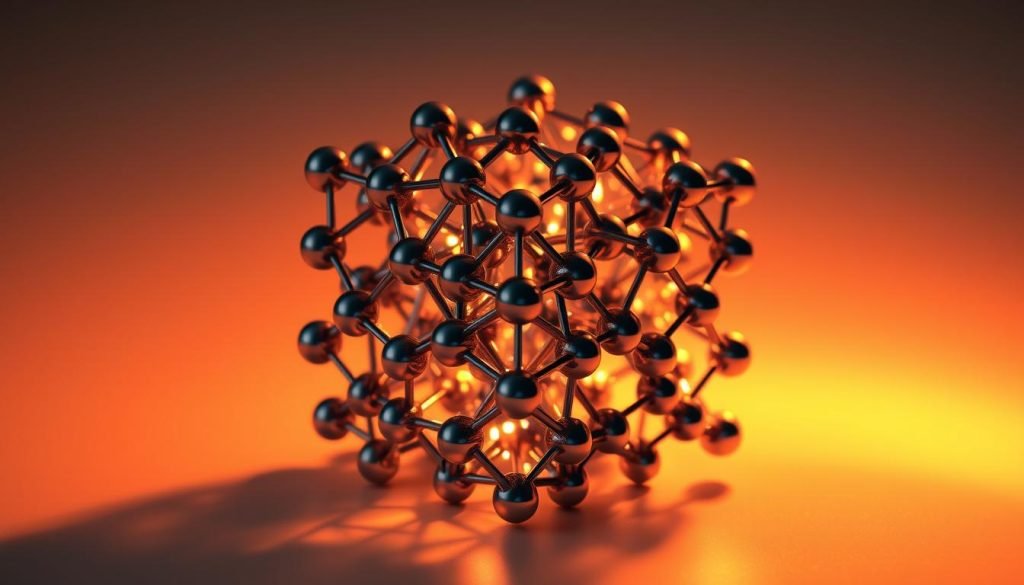
Tungsten’s magnetic properties are deeply rooted in its atomic structure, which is crucial for understanding its behavior. The arrangement of atoms in tungsten influences its magnetic characteristics, making it essential to examine its crystal structure. This examination will reveal how tungsten’s atomic configuration impacts its magnetic properties.
Electron Configuration and Magnetism
The electron configuration of tungsten plays a significant role in its magnetic behavior. With its unique arrangement of electrons, tungsten exhibits specific magnetic properties that are influenced by its atomic structure. The electron configuration contributes to the overall magnetic moment of tungsten.
Crystal Structure and Its Influence
Tungsten exists in two major crystalline forms: α and β. The α phase has a body-centered cubic (BCC) structure, which is the more stable form, while the β phase has an A15 cubic structure and is metastable. The crystal structure of tungsten significantly influences its magnetic properties, with the α phase exhibiting different characteristics compared to the β phase.
The spacing and arrangement of tungsten atoms in the crystal lattice affect the interaction between magnetic moments. Crystal defects, grain boundaries, and impurities in tungsten can create localized variations in magnetic properties. Furthermore, the crystal structure influences the mobility of electrons, which in turn affects the material’s response to magnetic fields.
Temperature changes can also impact tungsten’s crystal structure and consequently its magnetic behavior, particularly at extremely high or low temperatures. Understanding how temperature influences tungsten’s magnetic properties is crucial for applications that involve extreme temperature conditions.
Is Tungsten Carbide Magnetic?
When exploring the magnetism of tungsten carbide, it’s crucial to understand that its behavior is not straightforward and is affected by several factors. Tungsten carbide is a composite material made from tungsten and carbon, with a binder metal added to enhance its properties.
Composition of Tungsten Carbide
Tungsten carbide is primarily composed of tungsten and carbon atoms, forming a hard and wear-resistant material. However, to make it more durable and suitable for various applications, a binder metal is typically added to the mixture. The most common binder used is cobalt, but other metals like nickel and iron can also be used.
Magnetic Properties of Tungsten Carbide
The magnetic properties of tungsten carbide depend significantly on the type and amount of binder metal used. Cobalt, being ferromagnetic, contributes to the magnetic behavior of tungsten carbide. The more cobalt present, typically in the range of 6-15%, the stronger the magnetic response. Nickel and iron, when used as binders, also affect the magnetism, though nickel generally results in weaker magnetic properties compared to cobalt.
Factors Affecting Magnetism in Tungsten Carbide
Several factors influence the magnetic behavior of tungsten carbide products. The type and content of the binder metal are the most significant factors. The manufacturing process, including the sintering temperature and cooling rate, can also impact the distribution of the binder metal and consequently the magnetic properties. Additionally, the grain size and microstructure of the tungsten carbide material play a role in its magnetic behavior. Surface treatments, coatings, and post-processing techniques can further modify the apparent magnetic properties of tungsten carbide components.
You can see that the magnetism of tungsten carbide is a complex trait influenced by multiple factors, including composition, manufacturing processes, and post-processing treatments. Understanding these factors is crucial for predicting and controlling the magnetic behavior of tungsten carbide in various applications.
Comparing Tungsten and Tungsten Carbide Magnetism
Understanding the magnetic properties of tungsten and tungsten carbide is crucial for selecting the right material for specific applications. You need to consider how these materials behave in different magnetic environments to ensure they meet the requirements of your project.
Key Differences in Magnetic Behavior
Tungsten is paramagnetic, meaning it is weakly attracted to magnets, while tungsten carbide, often bonded with cobalt, can exhibit ferromagnetic properties. This difference is significant because it affects how these materials are used in industrial applications. For example, the paramagnetic nature of tungsten makes it suitable for applications where minimal magnetic interference is required.
Practical Implications of These Differences
The distinct magnetic properties of tungsten and tungsten carbide influence their suitability for various uses. Pure tungsten’s paramagnetic nature is advantageous in certain electrical contacts or non-magnetic tools used near sensitive equipment. In contrast, cobalt-bonded tungsten carbide’s ferromagnetic properties can be beneficial for magnetic retrieval of broken tools but may interfere with electronic components. Industries like aerospace, medical, and electronics consider these magnetic characteristics when choosing between tungsten and tungsten carbide.
The magnetic differences also affect machining processes, quality control methods, and testing procedures for components made from these materials. As a result, understanding these properties is essential for making informed decisions in engineering design, particularly for applications where magnetic properties could affect performance.
Are Tungsten Alloys Magnetic?
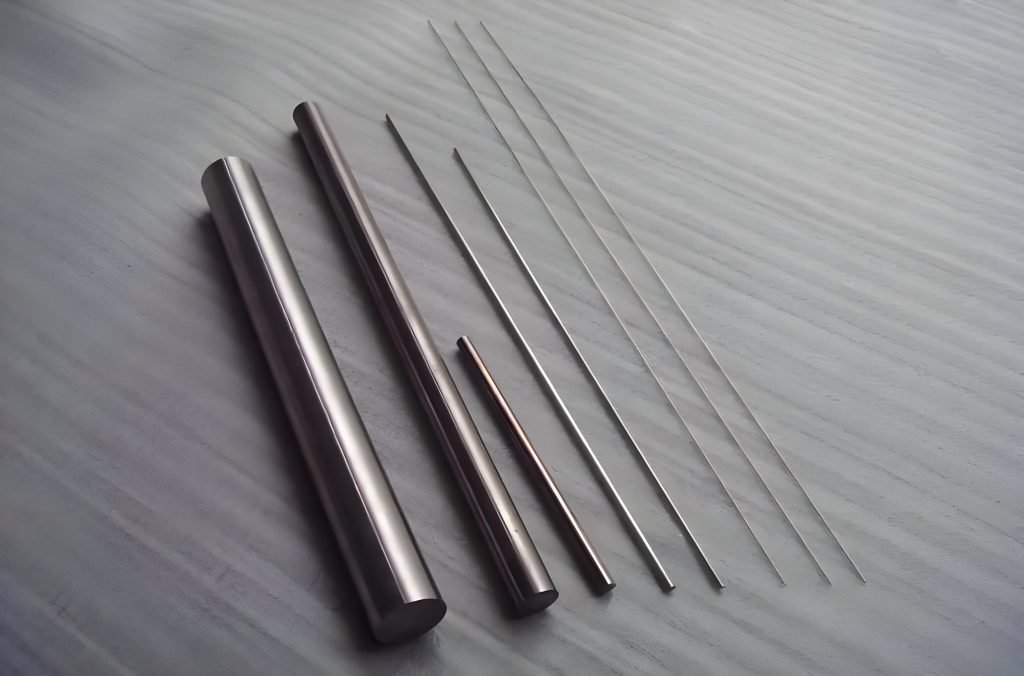
You may be wondering whether tungsten alloys are magnetic, and the answer lies in understanding their composition and properties. Tungsten alloys are created by combining tungsten with other elements, which can significantly influence their magnetic behavior.
Common Tungsten Alloys and Their Compositions
Tungsten alloys are used in various applications due to their unique properties. These alloys can be composed of tungsten and other elements such as iron, nickel, copper, or silver. The specific composition of a tungsten alloy determines its magnetic properties.
Magnetic Properties of Different Tungsten Alloys
The magnetic properties of tungsten alloys vary depending on the elements used in their composition. When tungsten is combined with ferromagnetic materials like iron or nickel, the resulting alloy may exhibit weak magnetism. The strength of this magnetism largely depends on the percentage of magnetic metals used in the alloy and the specific manufacturing process.
How Alloying Elements Affect Magnetism
The alloying elements in tungsten alloys play a crucial role in determining their magnetic properties. Ferromagnetic elements like iron, nickel, and cobalt introduce magnetic domains into the alloy, directly affecting its magnetic response. On the other hand, non-magnetic elements like copper and silver can dilute the magnetic effect, allowing for the creation of materials with customized magnetic properties.
The interaction between tungsten atoms and the atoms of alloying elements can either enhance or suppress magnetic behavior through various quantum mechanical effects. Furthermore, the distribution of alloying elements, whether they form a continuous matrix or isolated particles, significantly impacts the magnetic properties of the resulting tungsten alloy.
Heat treatment and processing can also alter the crystal structure and phase composition of tungsten alloys, thereby modifying their magnetic characteristics. Understanding these factors is essential for tailoring tungsten alloys for specific applications where magnetic properties are critical.
Tungsten in Magnetic Fields: Behavior and Reactions
As a paramagnetic material, tungsten’s response to magnetic fields is distinct from ferromagnetic materials. You might be wondering how tungsten behaves when exposed to magnetic fields. Let’s explore this phenomenon and understand its implications.
How Tungsten Responds to External Magnetic Fields
Tungsten is weakly attracted to magnetic fields due to its paramagnetic nature. When an external magnetic field is applied, tungsten exhibits temporary magnetization. This effect is minimal and does not result in permanent magnetization once the external magnetic field is removed.
The atomic structure of tungsten plays a crucial role in its magnetic behavior. Unlike ferromagnetic materials like iron, tungsten does not have aligned magnetic domains, making permanent magnetization impossible without alloying with ferromagnetic elements.
Temporary vs. Permanent Magnetization
The key difference between temporary and permanent magnetization lies in the material’s ability to retain magnetization after the external magnetic field is removed. Tungsten, being paramagnetic, only achieves temporary magnetization while in the presence of an external magnetic field. This characteristic affects tungsten’s applications in various industries, where sometimes it’s advantageous not to retain magnetism.
Theoretical conditions, such as extremely low temperatures or very strong magnetic fields, might alter tungsten’s magnetic behavior. Understanding these conditions can provide insights into potential future applications of tungsten in advanced technologies.
Temperature Effects on Tungsten’s Magnetic Properties
The relationship between temperature and tungsten’s magnetic properties is complex and multifaceted. As you explore the behavior of tungsten under various temperature conditions, you’ll discover significant changes in its magnetic characteristics.
Behavior at Room Temperature
At room temperature, tungsten exhibits a specific set of magnetic properties that are influenced by its atomic structure and electron configuration. Understanding these properties is essential for applications where tungsten is used at ambient temperatures.
High-Temperature Magnetic Characteristics
As temperature increases, tungsten’s magnetic behavior changes. Its high melting point allows it to maintain its structure at elevated temperatures, but its magnetic properties are still affected. You should consider these changes when designing applications that involve high-temperature environments.
Cryogenic Conditions and Magnetism
At cryogenic temperatures, tungsten’s magnetic properties undergo a dramatic shift. The α phase of tungsten becomes superconducting at around 0.015 K, expelling magnetic fields through the Meissner effect. Alloying tungsten with other elements can raise this transition temperature, making it valuable for applications like superconducting magnets and quantum computing components.
By understanding how temperature affects tungsten’s magnetic properties, you can better utilize this versatile metal in various applications, from high-temperature environments to cryogenic conditions.
Factors That Affect Tungsten Magnetism
Tungsten, a metal with distinct properties, has its magnetic behavior shaped by several key factors. Understanding these factors is crucial for applications where tungsten’s magnetic properties play a significant role.
Purity Levels and Their Impact
The purity of tungsten significantly influences its magnetic properties. Impurities can alter the metal’s electronic structure, thereby affecting its magnetic behavior. High-purity tungsten tends to exhibit more consistent magnetic properties, making it preferable for applications where precise magnetic characteristics are required.
Manufacturing Processes and Magnetism
The manufacturing process of tungsten products can also impact their magnetic properties. Processes such as sintering, forging, or machining can introduce variations in the material’s microstructure, which in turn can affect its magnetism. Understanding the manufacturing process is essential to predict and control the magnetic behavior of tungsten components.
Surface Treatments and Coatings
Surface treatments and coatings can dramatically alter the apparent magnetic properties of tungsten. Various techniques such as nickel, copper, or gold plating can be applied to tungsten to modify its magnetic response. Additionally, processes like surface nitriding or carburizing can change the composition of the surface layer, potentially altering its magnetic characteristics.
You can explore how different coatings and surface treatments are used to customize the magnetic properties of tungsten for specific applications. Techniques such as physical vapor deposition (PVD) or chemical vapor deposition (CVD) can be employed to create coatings that not only affect magnetism but also enhance other properties like corrosion resistance and wear resistance.
By understanding the factors that influence tungsten’s magnetism, you can better utilize this versatile metal in various applications, from industrial components to high-tech devices.
Testing Tungsten for Magnetic Properties
To determine tungsten’s magnetic behavior, several testing methods can be employed, ranging from basic to sophisticated. You can gain a deeper understanding of tungsten’s magnetic properties by using a combination of these approaches.
Simple Tests for Magnetism
Simple tests for magnetism involve bringing a magnet close to the tungsten sample to observe any attraction or repulsion. While this method is straightforward, it may not provide precise measurements of tungsten’s magnetic susceptibility.
Advanced Measurement Techniques
For more accurate assessments, advanced measurement techniques such as vibrating sample magnetometry (VSM) or superconducting quantum interference device (SQUID) magnetometry can be used. These methods allow for precise measurements of tungsten’s magnetic susceptibility, which is approximately +6.8 × 10⁻⁶ emu/g at room temperature.
Interpreting Magnetic Test Results
When interpreting magnetic test results for tungsten, you should expect a positive but very small value, indicating a slight attraction to magnetic fields. Deviations from this expected value may suggest the presence of ferromagnetic impurities or alloying elements. By comparing your test results with reference standards and published data, you can validate your findings and make informed decisions about tungsten material selection for specific applications.
Industrial Applications Leveraging Tungsten’s Magnetic Properties
Industrial applications of tungsten are diverse, leveraging its high density and other beneficial properties. You can find tungsten used in various industries due to its distinct characteristics, making it an ideal material for numerous applications.
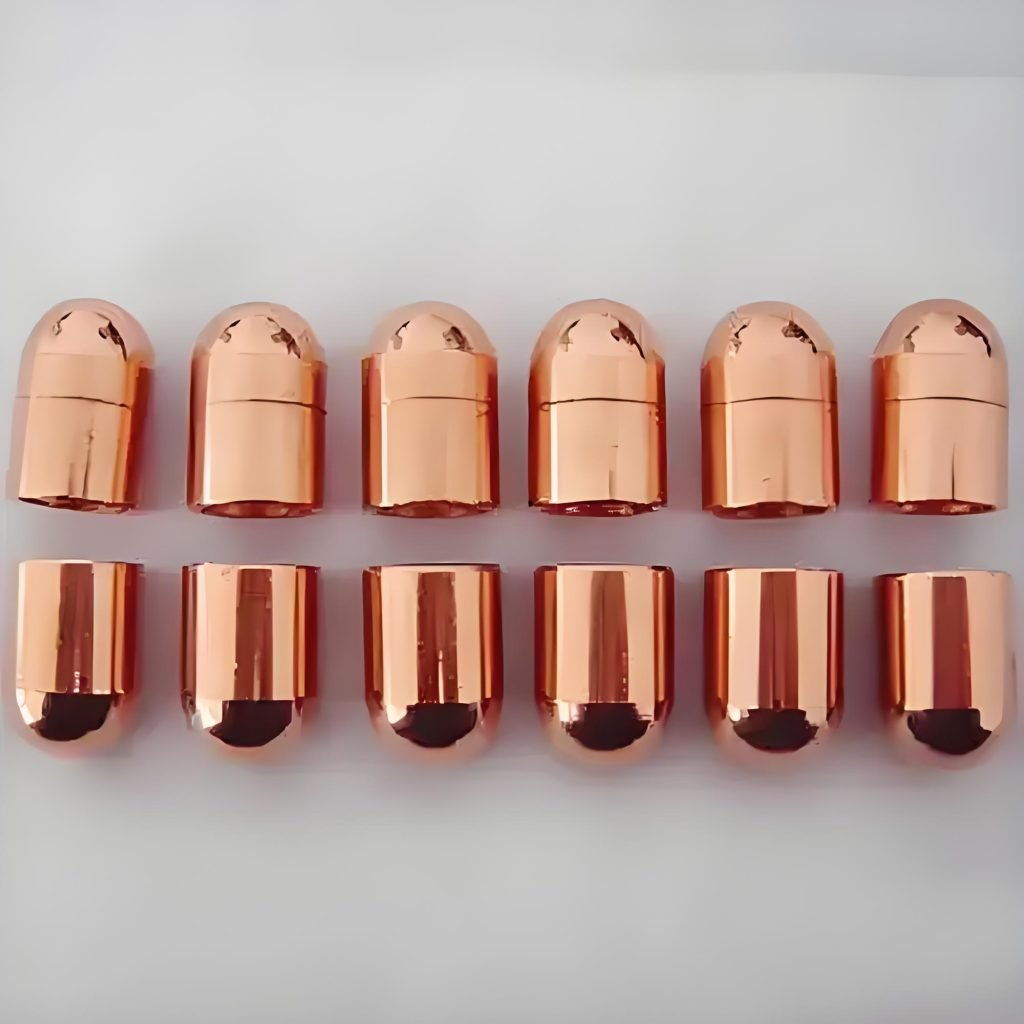
Aerospace and Defense Applications
Tungsten’s high density and ability to withstand extreme conditions make it valuable in aerospace and defense. It’s used in kinetic energy penetrators, counterweights, and other components where its properties are crucial.
Electronics and Electrical Engineering
In electronics and electrical engineering, tungsten is used for its conductivity and durability. It’s found in electrical contacts, electrodes, and other components where its properties enhance performance.
Medical and Scientific Instruments
Tungsten’s applications in medical and scientific instruments are particularly noteworthy. Its high density and non-reactivity make it ideal for radiation shielding in X-ray equipment and radiotherapy devices. Tungsten is also used in medical imaging equipment as collimators and components in X-ray tubes, where precise manufacturing and non-magnetic properties are essential.
In scientific applications, tungsten electrodes are used in electron microscopy and plasma cutting due to their high melting point and minimal magnetic interference. Additionally, tungsten’s density and machinability make it suitable for counterbalances and precision components in laboratory instruments like centrifuges and analytical balances.
Tungsten’s role in MRI-compatible surgical instruments and implants is also significant. Its non-magnetic nature ensures safety in strong magnetic fields, while its strength and durability provide reliable performance.
Tungsten vs. Other Metals: A Magnetic Comparison
In industrial settings, the choice between tungsten and other metals often hinges on their magnetic properties and how they impact the application. Understanding these differences is crucial for selecting the right material for your specific needs.
Tungsten vs. Iron, Nickel, and Cobalt
Tungsten is often compared to ferromagnetic materials like iron, nickel, and cobalt due to their strong magnetic properties. Unlike these metals, tungsten is not strongly magnetic, which makes it suitable for applications where minimal magnetic interference is required. For instance, in high-precision instruments, tungsten’s low magnetic susceptibility is advantageous.
Tungsten vs. Other Non-Ferrous Metals
When compared to other non-ferrous metals, tungsten stands out due to its high density and wear resistance. While metals like copper and aluminum are good conductors and may be used in applications requiring specific magnetic properties, tungsten’s unique combination of properties makes it ideal for certain high-wear applications.
Choosing Between Tungsten and Magnetic Alternatives
To choose between tungsten and magnetic alternatives, consider factors such as required magnetic properties, operating temperature, density requirements, and cost. For applications requiring strong magnetic responses, ferromagnetic materials may be preferred. However, when high density and minimal magnetic interference are needed, tungsten is often the superior choice.
Common Misconceptions About Tungsten and Magnetism
The magnetic properties of tungsten and its alloys are frequently misinterpreted. Many assume that because tungsten is a metal, it must be magnetic. However, the reality is more complex.
Debunking Myths About Tungsten Rings and Magnetism
Tungsten rings, often made from tungsten carbide, are commonly believed to be non-magnetic. While it’s true that pure tungsten carbide is not magnetic, many commercial tungsten carbide products contain binders like cobalt, nickel, or iron, which can make them slightly magnetic.
Clarifying Confusion About Tungsten Carbide
The confusion surrounding tungsten carbide’s magnetic properties stems from the difference between pure tungsten carbide and the materials used in commercial products. Pure tungsten carbide is not magnetic, but the addition of certain metals during the manufacturing process can introduce magnetic properties.
You should understand that the percentage of binder metals like cobalt directly affects the magnetic response of tungsten carbide products. This explains why different products exhibit varying degrees of magnetism.
By clarifying these misconceptions, you’ll gain a better understanding of tungsten and its compounds’ magnetic behavior, helping you make informed decisions when working with these materials.
Conclusion:
Tungsten is highly valued for its exceptional physical properties, including its high melting point of 3,422°C, remarkable density, and outstanding strength. While its minimal magnetic response is often overshadowed by these attributes, it’s crucial to understand tungsten’s magnetic properties for informed material selection.
Pure tungsten is essentially non-magnetic for practical purposes, but tungsten carbide products and tungsten alloys can exhibit varying degrees of magnetism depending on their composition. The unique combination of tungsten’s properties makes it invaluable in numerous applications where minimal magnetic interference is advantageous, such as in aerospace components and radiation shielding.
Factors such as purity, alloying elements, temperature, and manufacturing processes can influence tungsten’s magnetic behavior. By understanding these factors and clarifying common misconceptions about tungsten’s magnetic properties, you’re now equipped to make informed decisions about tungsten and its alloys for applications where magnetic properties are a consideration.

